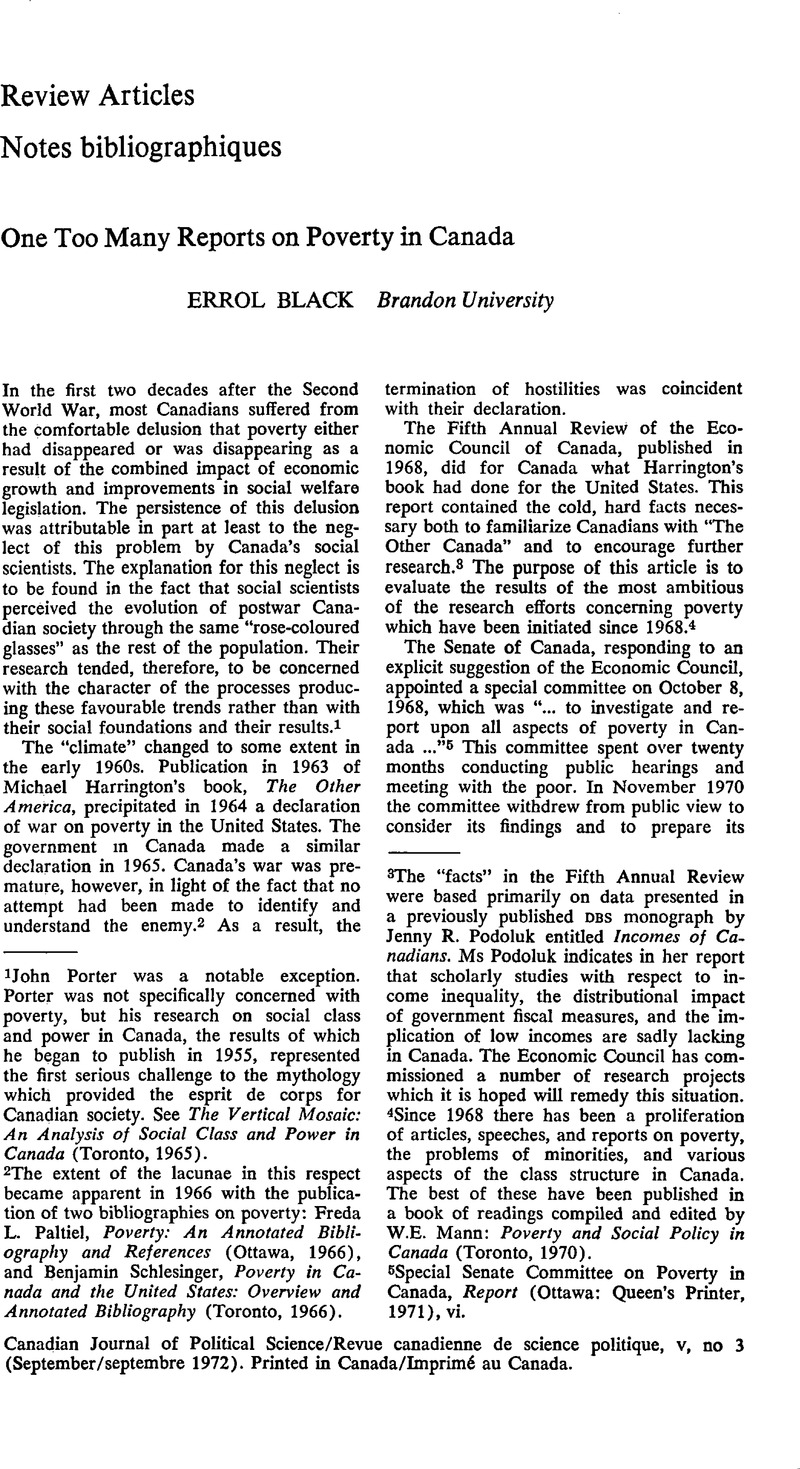Article contents
One Too Many Reports on Poverty in Canada
Published online by Cambridge University Press: 10 November 2009
Abstract

- Type
- Notes Bibliographiques/Review Articles
- Information
- Canadian Journal of Political Science/Revue canadienne de science politique , Volume 5 , Issue 3 , September 1972 , pp. 439 - 443
- Copyright
- Copyright © Canadian Political Science Association (l'Association canadienne de science politique) and/et la Société québécoise de science politique 1972
References
1 John Porter was a notable exception. Porter was not specifically concerned with poverty, but his research on social class and power in Canada, the results of which he began to publish in 1955, represented the first serious challenge to the mythology which provided the esprit de corps for Canadian society. See The Vertical Mosaic: An Analysis of Social Class and Power in Canada (Toronto, 1965).
2 The extent of the lacunae in this respect became apparent in 1966 with the publication of two bibliographies on poverty: Paltiel, Freda L., Poverty: An Annotated Bibliography and References (Ottawa, 1966)Google Scholar, and Schlesinger, Benjamin, Poverty in Canada and the United States: Overview and Annotated Bibliography (Toronto, 1966).Google Scholar
3 The “facts” in the Fifth Annual Review were based primarily on data presented in a previously published DBS monograph by Jenny R. Podoluk entitled Incomes of Canadians. Ms Podoluk indicates in her report that scholarly studies with respect to income inequality, the distributional impact of government fiscal measures, and the implication of low incomes are sadly lacking in Canada. The Economic Council has commissioned a number of research projects which it is hoped will remedy this situation.
4 Since 1968 there has been a proliferation of articles, speeches, and reports on poverty, the problems of minorities, and various aspects of the class structure in Canada. The best of these have been published in a book of readings compiled and edited by Mann, W.E.: Poverty and Social Policy in Canada (Toronto, 1970).Google Scholar
5 Special Senate Committee on Poverty in Canada, Report (Ottawa: Queen's Printer, 1971), vi.
6 Adams, Ian, Cameron, William, Hill, Brian, and Penz, Peter, The Real Poverty Report (Edmonton: M.G. Hurtig Limited, 1971), 11.Google Scholar
7 “The Dual Economy,” in The Dynamics of American Industry Structure (New York, 1968).
8 Piore, Michael S. and Doeringer, Peter B., Internal Labour Markets and Manpower Analysis (Lexington, Mass., 1971), 165.Google Scholar
9 The Prices and Incomes Commission, the Canadian Development Corporation, recent changes in consumer legislation, and the pending changes in competition and labour relations legislation are examples.
10 The Great Transformation (pb ed., Boston, 1967). Polyani's book was originally published in 1944.
11 See Chamberlain, Neil W., The Labor Sector (New York, 1965)Google Scholar, for a concise statement of the role Polyani ascribed to trade unions.
- 1
- Cited by




